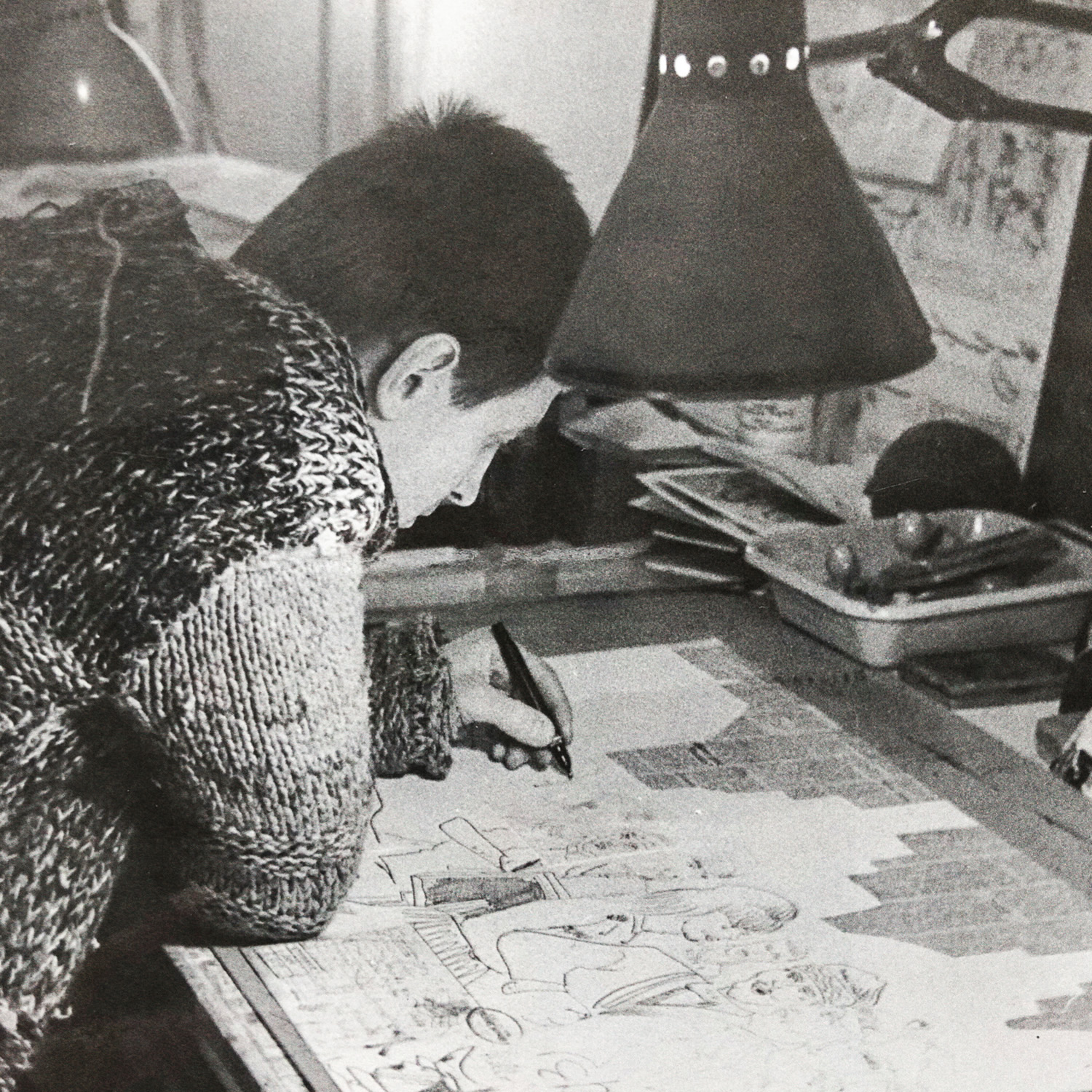
The presentation of ten of Edward Dwurnik’s works on paper never shown before marks the beginning of the joint work with Edward Dwurnik Foundation on an intriguing archive of the artist, in which motifs and stories known from paintings are developed, or the reverse—drawings left by the artist include ideas and emotions later expanded on in his paintings. In this respect, the selection we present is unique. Dwurnik is known for his rapid painterly narrations and the characteristic, free and lively range of his brush. But here we have a more experimental, conceptual and less elemental approach to building an image. The key to the selection is the technique of assembly, juxtaposing apparently distant aspects and materials.
The exceptional works combining drawing with photographic images are notable. This short series was created in 1973 in cooperation with the photographer Teresa Gierzyńska, who was also Dwurnik’s wife. The views she captured of her hometown Rypin and the surrounding landscape, as well as architectural details photographed during a trip to Leningrad, were enlarged on sheets of matte photographic paper, leaving empty fields. These were then filled in by Dwurnik with figurative drawings. This rare combination of media is an example of an inspiring marital/artistic relationship, but also provides an original image of the small-town landscape during the era of modernization under Polish communist party leader Edward Gierek. In place of the optimism promoted by the authorities, Dwurnik’s drawings feature apathetic figures in old-world costumes and grey, not entirely legible photographic backgrounds. Together—as actors and stage setting—they form a theatrical aura of expectancy and superficial decorativeness, concealing an authentic tension between two worlds: the real boredom and poverty of the provinces, and the sphere of aspirations and phantasmagoria of a better, grander life.
The show is supplemented by three collage compositions, a kind of notebook or inventory for the artist, comprising sketches, fragments of other works, photos, stamps, and clippings from catalogues, often of an autobiographical nature. They reveal lesser-known sides to the painter, as not just a sensitive observer of social emotions but also an obsessive documentalist assembling his narrative from various fragments and scraps of the surrounding reality.

